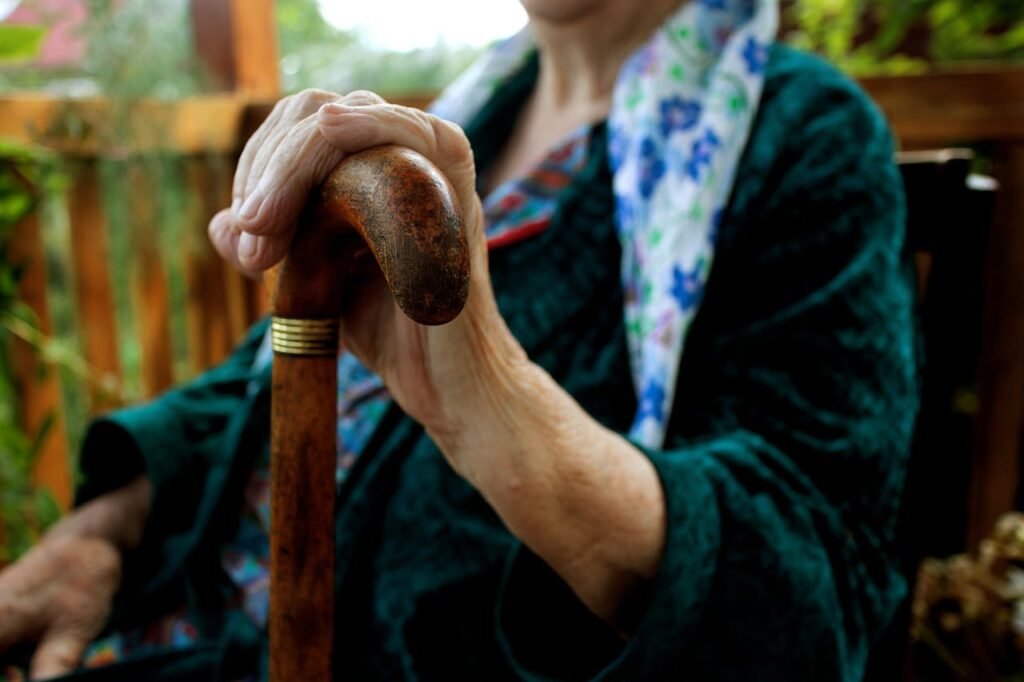Travel has a special way of bringing joy back into life. It reminds us that the world is still full of things to see, people to meet, and stories to live. For seniors using prosthetic limbs, travel can feel both exciting and a little challenging. Questions often arise—Will it be comfortable? Is security easy to pass? Can I manage long walks or stairs?
The good news is that travel today is more accessible than ever. With the right preparation, seniors with prosthetics can enjoy smooth, comfortable trips across cities or even countries. Whether you’re heading to meet family, visiting a favorite hill station, or simply taking a break by the sea, travel is absolutely possible—and it can be joyful, too.
At RoboBionics, we meet many people who dream of traveling again after getting their prosthetic limbs. Some hesitate at first, worried about comfort or mobility. But after learning a few practical tricks, most discover how easy and freeing it can be. With simple planning, thoughtful packing, and the right mindset, travel doesn’t have to feel like an obstacle—it becomes an adventure again.
This detailed guide will walk you through everything you need to know about traveling with prosthetics—by train, by flight, and by cab. You’ll learn how to prepare before the journey, how to handle stations and airports, what to expect during security checks, and how to stay comfortable on long rides.
Think of this as your friendly travel companion—someone who knows exactly what you need and guides you step by step. Let’s make travel simple, safe, and full of confidence again.
Travel by Train: Comfort, Ease, and Confidence
Planning Ahead for a Smooth Train Journey

Train travel is one of the most comfortable ways for seniors with prosthetics to move around India. The wide aisles, sleeping berths, and friendly railway staff make it easier than most other transport options. But like any good trip, it starts with preparation.
Book your tickets early. Try to get lower berths—they’re much easier to access without climbing. If you’re using online booking platforms like IRCTC, look for the “Senior Citizen” option for discounts. You can also request assistance for boarding and luggage handling when you book.
If possible, choose trains with better accessibility, such as Rajdhani, Duronto, or Shatabdi Express. These have cleaner compartments, trained staff, and smoother rides, which make a big difference for comfort.
Reaching the Station with Ease
Reaching the station calmly sets the tone for the entire trip. Arrive at least an hour early so you don’t feel rushed. Most major stations now have ramps or lifts for easy movement, but it’s always good to ask a porter or railway staff for help if you need it.
Wear comfortable clothing that allows easy movement. Loose, breathable fabrics are best for India’s climate. If your prosthesis has an electronic component, like Grippy™ from RoboBionics, make sure it’s fully charged and packed safely with your essentials.
Keep a small bag handy with water, medication, and light snacks. These simple comforts can help you stay relaxed during short waits or delays.
Boarding the Train Safely
Boarding can be the trickiest part if there’s a gap or step between the platform and the train. Ask a porter or travel companion to help you board slowly and steadily. Use the side railings for support—never rush or climb too quickly.
For seniors using prosthetic legs, it helps to place the sound limb first, followed by the prosthetic one. This gives more stability. Once inside, move slowly until you’re at your seat or berth.
If your train coach feels crowded, politely ask others to give you space. Most passengers are understanding once they realize your situation.
Making Your Berth Comfortable
Once seated, take a moment to settle your things. Keep essentials like your phone, charger, and water bottle within easy reach. Avoid placing bags or boxes in walkways—they can block your path when moving around.
If you’re on a long journey, stretch your legs gently every hour or so. Move your prosthetic limb slowly to keep blood circulation flowing. For those using upper-limb prosthetics, such as Grippy™, resting your arm on a soft cushion can help ease muscle tension.
You can also carry a small travel pillow or neck support for better comfort during overnight trips. A light blanket or shawl keeps you warm when the AC gets too cold.
Using Train Facilities with Confidence
Modern trains have made great strides in accessibility. Some coaches have wide entrances and larger toilets for passengers with reduced mobility. If you’re unsure, ask the coach attendant which toilet is easier to use.
Carry wet wipes, tissue, and sanitizer to keep things hygienic. Trains may not always have spotless restrooms, so it helps to have your own cleaning kit.
When walking to the restroom, use the seat edges or wall railings for light support. If the train jerks or slows suddenly, pause until it stabilizes before taking another step.
Staying Safe During the Journey
Keep your prosthetic device and its accessories close to you. If it’s detachable or battery-powered, place it safely in a padded pouch when not in use. Avoid leaving valuable items in overhead racks or near the aisle.
At night, lock your luggage using a small chain or cable. Place your shoes or slippers near your berth so you can access them easily if you need to move around.
If you need any assistance, don’t hesitate to ask the coach attendant or railway police—they are trained to help senior passengers and people with disabilities.
Eating and Hydrating the Smart Way
Train food can sometimes be heavy or oily. Carry light snacks like fruits, nuts, or sandwiches for easy digestion. Drink plenty of water, but avoid too much tea or coffee—they can cause dehydration during long rides.
If you have dietary restrictions or take regular medication, keep your meals simple and on time. Set reminders on your phone if needed. Staying hydrated and nourished helps you stay alert and comfortable throughout the journey.
Arriving at Your Destination
When the train reaches your stop, don’t rush to get off. Wait for the crowd to clear a little. Ask a porter or a fellow passenger to help with your luggage. Step down slowly and look for a level surface before placing your prosthetic leg firmly.
If you’ve requested special assistance while booking, railway staff will usually be ready at the platform to guide you out. Take advantage of that service—it’s designed for your safety and ease.
After exiting, find a quiet spot to rest for a few minutes before moving on. Traveling with a prosthesis can be physically tiring, and a short pause helps you regain balance and energy.
Building Confidence on Every Trip
Every train journey is a chance to learn and grow more confident with your prosthetic. The more you travel, the more comfortable you become with timing, balance, and small adjustments along the way.
Don’t hesitate to share your experiences with others who might be nervous about traveling with a prosthesis. Your story could encourage them to take their first step too.
Travel by Flight: Ease, Comfort, and Preparation
Preparing Before the Flight

Air travel may seem intimidating for seniors with prosthetic limbs, but with the right preparation, it can be smooth and enjoyable. Start by booking your ticket early and selecting seats that make movement easier. An aisle seat close to the restroom is often best—it gives you space to stretch and stand without disturbing others.
When booking online, mention that you are a senior traveler using a prosthesis. Most airlines have special assistance programs, and they can arrange wheelchair service, priority boarding, or an escort from the entrance to the gate. It’s also wise to call the airline a few days before your trip to confirm these arrangements.
Keep your prosthetic documents handy. Some airports might ask for a doctor’s note or a manufacturer’s ID card during security checks. Having these papers ready avoids confusion and saves time.
Packing Smart for Air Travel
Packing is key when flying with prosthetics. Keep all essential items in your cabin bag—charger, maintenance tools, socket liners, and cleaning wipes. If you’re using an electronic prosthesis like Grippy™ from RoboBionics, carry its charger or extra batteries.
Pack light to avoid overexertion. A wheeled suitcase with a long handle makes moving through terminals much easier. Use packing cubes to organize clothes and toiletries neatly so you can access them quickly without digging around.
Avoid placing your prosthetic or its components in checked baggage. Always keep them with you to prevent damage or loss.
Reaching the Airport Comfortably
Arrive at the airport at least two hours before departure for domestic flights and three hours for international ones. This gives you enough time to go through check-in, security, and boarding without rushing.
Ask the airline staff for wheelchair assistance if needed—they can guide you from the entrance through security to the gate. Even if you don’t use a wheelchair regularly, it can help conserve energy for longer journeys.
Wear easy-to-remove shoes and comfortable clothes. Avoid tight belts or jewelry that could complicate security checks.
Going Through Security Screening
Security checks can make seniors with prosthetics feel anxious, but airport staff are trained to handle such situations with care. You can inform them politely that you are wearing a prosthetic limb. Usually, they will guide you to a separate screening area for a manual check.
You will not be asked to remove your prosthesis unless there’s a very specific reason. The security team might use a handheld metal detector or gently pat around the limb area. Stay calm and cooperative—it’s just part of the process.
If you’re using a myoelectric prosthesis like Grippy™, tell them it’s battery-powered. The battery can stay connected, but the security staff may inspect it visually. You can show the product identification card from RoboBionics for verification.
Boarding the Plane Smoothly
Airlines often allow passengers with special needs to board first. Take advantage of this—it gives you extra time to settle in without the rush of crowds.
When you reach your seat, place your cabin bag in the overhead bin with help from the flight attendants. Keep essential items like water, medication, and tissues in the seat pocket or under your seat for easy reach.
If your prosthesis feels tight due to cabin pressure, loosen it slightly once the plane reaches cruising altitude. This helps prevent discomfort during long flights.
Staying Comfortable During the Flight
Sitting for long hours can make muscles stiff, especially for prosthetic users. Move your ankles, stretch your arms, and shift your sitting position every half hour. If possible, take short walks along the aisle when the seatbelt sign is off.
Use a small pillow to support your back or arm. Some seniors also carry a soft sleeve or cushion to reduce pressure on the prosthetic socket. These small adjustments make a big difference on long trips.
Drink plenty of water. Airplane cabins can be very dry, and staying hydrated helps you feel fresh. Avoid too much tea or coffee as they can cause dehydration.
Using the Restroom on Board
Airplane restrooms are small, so move carefully. Wait until the seatbelt sign is off and the cabin is stable before going. Use the walls for light support while walking.
If you’re traveling alone, inform a flight attendant that you might need extra time in the restroom. They can discreetly check if you need assistance without drawing attention.
For those using upper-limb prosthetics, keeping tissues and sanitizer handy makes things easier in the tight space.
Handling Air Pressure and Altitude
Changes in air pressure can sometimes cause slight swelling in the limb. If you feel any tightness, gently massage your residual limb when seated. If it becomes uncomfortable, you can briefly remove your prosthesis and rest your leg on a cushion or footrest.
For myoelectric prosthetic users, carry a small cloth to wipe away any moisture that builds up due to temperature changes. Keeping the limb area dry helps maintain comfort and function.
Arriving and Exiting the Plane
Once the plane lands, stay seated until the crowd begins to move. There’s no need to rush. Ask for help from the crew if you need assistance taking your luggage down or stepping out.
If you’ve requested special assistance, ground staff will meet you at the exit. They can escort you through baggage claim and even help you get a cab or connect to another flight.
Take a few minutes to rest once you reach the airport lounge or arrival hall. Long flights can be tiring, so give your body time to recover before continuing your journey.
Managing Jet Lag and Fatigue
Traveling across time zones can disturb sleep patterns, especially for seniors. Try to rest well before the trip and get some sunlight after arrival—it helps reset your body clock.
Eat light meals and avoid heavy food for the first day. If your prosthesis feels stiff or swollen, remove it for a few minutes and gently stretch your limb.
With experience, you’ll find your own rhythm and comfort zone. Flying with a prosthetic may take patience at first, but soon it becomes second nature.
Travel by Cab: Local Comfort and Last-Mile Freedom
Choosing the Right Cab Service

Cabs make traveling short distances easy and flexible for seniors using prosthetics. They offer privacy, door-to-door convenience, and the comfort of setting your own pace. The key is choosing a reliable and comfortable service.
Book with trusted apps like Uber, Ola, or airport cab counters that offer safety tracking and verified drivers. Always check that the car type you select suits your needs—sedans are easier to get in and out of compared to smaller hatchbacks or tall SUVs.
If you have a preferred driver or company, save their number for future trips. Familiar faces can bring extra comfort, especially when traveling frequently to the same places like hospitals, markets, or train stations.
Getting In and Out of the Cab Comfortably
Getting into a car can feel tricky with a prosthetic leg at first, but a few small techniques make it much easier. Start by backing toward the seat until you feel it behind your knees, then sit down slowly while holding the door frame for support. Once seated, swing your legs in carefully.
When getting out, do the reverse—turn your body first, then place your sound leg outside before the prosthetic one. This gives more control and balance. Ask the driver to park close to the curb or on level ground whenever possible.
If the car is too high or low, use a small folding stool or footstep—it can make a world of difference for comfort and safety.
Packing and Handling Luggage
Seniors with prosthetics should avoid lifting heavy bags. Keep your luggage lightweight and use wheeled trolleys that roll easily on uneven ground. When booking the cab, mention if you’ll need help loading your bags—the driver can assist you with that.
If you’re carrying your prosthetic kit, make sure it’s placed flat on the car floor or seat beside you, not in the trunk where it can get tossed around.
Keep smaller essentials like medicine, tissues, and a water bottle within arm’s reach. These little comforts make the ride smoother and stress-free.
Choosing the Right Seating Position
Where you sit in the cab can affect how comfortable the journey feels. For short rides, the back seat is perfect—it offers space to stretch and adjust your prosthetic limb. On longer trips, sitting in the front seat might help you control leg position better, especially if you use a prosthetic leg and want extra legroom.
Before starting the ride, take a moment to adjust your seat. Recline slightly for back support, and if possible, place a small cushion behind your lower back or under your thigh for better comfort.
You can also ask the driver to adjust the air conditioning to your liking. Staying at a comfortable temperature helps prevent fatigue during longer rides.
Safety During the Ride
Always fasten your seat belt before the cab moves, even for short trips. Tell the driver to drive smoothly and avoid sudden stops. Most drivers are happy to maintain a steady pace once they understand you’re a senior traveler using a prosthetic.
Avoid using your phone constantly during the ride—it can strain your neck and make you less aware of movement. Instead, keep your focus on your posture and breathing. This helps reduce stiffness and tiredness.
If the cab ride is more than an hour long, ask for short breaks. Stepping out for a few minutes to stretch or move your legs helps prevent stiffness and improves circulation.
Managing Short City Rides
City rides are often full of traffic, bumps, and sudden halts. To make them easier, choose travel times when roads are less crowded—early mornings or late afternoons work best.
Use maps or navigation apps to track your route so you can relax knowing you’re headed the right way. If traffic is bad, remind your driver to avoid abrupt stops or sharp turns. Calm driving ensures better comfort and control over your prosthetic limb.
When the cab stops, take your time before stepping out. Wait until the driver opens the door and checks that the ground outside is even. Moving slowly and steadily keeps you safe and relaxed.
Long Road Trips and Outstation Cabs
For long-distance cab rides, planning ahead is vital. Inform the driver about your pace, rest needs, and the type of assistance you might require. Choose routes with frequent rest stops where you can stretch, use the restroom, and have a light snack.
Carry an extra cushion or small travel pillow to support your back. Some seniors also keep a soft towel to cushion the prosthetic socket during bumpy rides.
Drink plenty of water but not too much at once. Balance hydration with restroom breaks so you don’t feel uncomfortable. For electronic prosthetic users, make sure your device is charged before starting out—keep the charger in your travel bag just in case.
Comfort Tips for Hot and Cold Weather
India’s weather changes quickly, and temperature can affect both you and your prosthetic. During hot days, metal or silicone parts may warm up. Keep a cotton cloth to wipe away sweat and avoid skin irritation.
In cold weather, covering the limb with a soft wrap or wearing loose trousers keeps joints flexible. If your prosthesis has metal parts, a simple layer of fabric prevents the chill from spreading to your skin.
Regulate the car’s air conditioning to a mild level—not too cold or dry—to avoid discomfort on longer trips.
Using Ride Assistance and Accessibility Features
Some modern cab services now offer cars designed for passengers with mobility challenges. They come with wide doors, ramps, and extra space for prosthetic users or wheelchairs. If you travel often, check if your city has accessible cab options—you can save them as your preferred rides on the app.
Drivers trained in assisting seniors can also make your experience smoother. They know how to help without making you feel dependent, maintaining both comfort and dignity.
Staying Calm in Busy or Unfamiliar Areas
New places or noisy traffic can sometimes feel overwhelming. It helps to carry noise-canceling earphones or light music to keep you relaxed. If you ever feel uneasy, ask the driver to lower the volume or slow down.
Keep important contacts saved on your phone, including family, a nearby hospital, and your prosthetic clinic. Having these numbers easily available gives peace of mind wherever you go.
Ending the Journey Gracefully
When the cab reaches your destination, ask the driver to stop near the entrance or on level ground. Take your time gathering your belongings and adjusting your balance before stepping out.
If you’ve had a pleasant ride, thank the driver—it not only spreads positivity but also builds trust for future trips. Save their contact if you’d like to book with them again.
Each smooth cab ride builds confidence. Over time, what once felt challenging becomes second nature. With the right attitude and a few thoughtful adjustments, every road—short or long—can feel open and welcoming.
Smart Travel Habits, Health Tips, and Conclusion
Building Smart Travel Habits

Traveling with a prosthetic limb becomes easier when you create simple routines. Start by preparing a small travel checklist—prosthetic care items, medications, charger, water, and comfort aids. Review it before every trip. This habit ensures you never forget something important and helps you feel confident before leaving home.
Always allow extra time for everything. Whether you’re catching a train or flight, a calm start keeps your mind relaxed. Rushing often leads to small mistakes or stress, and stress makes movement harder. So plan ahead, stay unhurried, and enjoy the process of getting from one place to another.
Try to keep your prosthesis clean and secure throughout the journey. If it’s a lower-limb prosthesis, check the fit before leaving home to avoid discomfort later. If it’s an upper-limb prosthesis, like our Grippy™ bionic hand, ensure all connections and sensors are working properly.
Maintaining Comfort During Long Journeys
Long trips can make your body tired, especially when sitting for hours. Take short breaks whenever possible—stand up, stretch, or gently move your arms and legs. Small movements keep your blood flowing and prevent stiffness.
Drink enough water, but don’t overdo it to the point of discomfort. Hydration keeps muscles and joints flexible, making it easier to move your prosthetic limb naturally.
Wear light, breathable clothes and avoid tight belts or shoes that restrict movement. The more comfortable your outfit, the more relaxed your travel experience becomes.
If you use an electronic prosthesis, carry its charger and a power bank. For battery-powered limbs like Grippy™, it’s best to fully charge the battery before traveling and switch to a power-saving mode when not in use.
Caring for Your Prosthetic on the Go
Your prosthesis is your travel partner—treat it with care. Always carry a soft cloth or wipes to clean it from dust, sweat, or moisture. A quick wipe now and then keeps the socket comfortable and prevents skin irritation.
If your prosthesis feels tight after sitting for long hours, take it off briefly in a private space to let your limb relax. Refit it carefully before resuming your journey.
Avoid keeping your prosthetic limb in direct sunlight or near heat vents in cars or trains. Excess heat can affect the material or sensors. Instead, store it in a cool, dry spot when not in use.
Handling Unexpected Situations Calmly
Travel plans don’t always go perfectly. A delay, long queue, or sudden crowd can easily test your patience. The key is to stay calm. You’ve handled bigger challenges before—this is just another small one.
If a flight is delayed or your train platform changes suddenly, ask for help from staff. Most travel staff are kind and ready to assist seniors and people using prosthetics.
If your prosthesis feels uncomfortable mid-journey, take a short pause and make small adjustments. Never push through pain or tightness. Comfort comes first.
Staying Emotionally Balanced While Traveling
For many seniors, the idea of traveling again after amputation or prosthetic use brings mixed feelings—excitement, anxiety, even a little fear. That’s perfectly normal. The first few trips might feel uncertain, but each experience builds confidence.
Remind yourself that your prosthesis is not a limitation—it’s an enabler. It gives you freedom, independence, and the chance to see the world again. With every journey, you’ll rediscover that life doesn’t stop with change—it grows in new directions.
Keep your mood light. Talk to fellow travelers, listen to your favorite songs, or read something inspiring. These small joys make travel feel less mechanical and more meaningful.
Traveling with Family or Friends
If you’re traveling with loved ones, tell them what kind of help you may need—holding a bag, offering an arm on steps, or walking slowly together. Clear communication prevents awkwardness and ensures everyone stays relaxed.
You can also show them how your prosthesis works. When people understand, they become more supportive and confident in helping you when required.
Shared travel experiences build memories that last. Many seniors tell us their happiest moments after getting a prosthesis were the family trips they thought they’d never take again.
Health and Safety Along the Journey
Travel can sometimes affect energy levels, especially for seniors. Eat light, stay hydrated, and avoid skipping meals. If you take regular medication, set phone alarms so you don’t miss a dose while on the move.
If your journey involves walking long distances, carry small snacks for energy. A banana, nuts, or a biscuit can keep your blood sugar steady.
Be mindful of skin care around your prosthetic socket. Long hours of wear, especially in humid weather, can cause irritation. Use a clean liner and change it if it feels damp. Keep a small tube of skin-friendly moisturizer or antiseptic cream handy.
Adapting to Different Environments
Each mode of travel brings its own rhythm. Trains move gently but constantly, flights bring pressure changes, and cabs face traffic and bumps. Learn how your body responds to each and adjust accordingly.
If you ever feel tired or stiff, take a short break instead of pushing through. It’s perfectly fine to move at your own pace. Remember, travel is meant to refresh, not exhaust.
The more you travel, the more familiar every environment becomes. Airports, stations, cab rides—all turn from challenges into comfortable routines.
Embracing Independence with Every Trip
Every time you travel on your own, even for a short distance, you prove something powerful—you’re not limited by your prosthesis; you’re empowered by it. Independence isn’t about doing everything alone; it’s about knowing you can when you want to.
Each journey adds a layer of courage. Each destination builds trust in yourself and your prosthetic. Soon, you’ll find travel not just possible but deeply enjoyable again.
Conclusion: The Journey Is Yours to Enjoy
Traveling with a prosthetic limb may seem daunting at first, but it’s simply a new way of exploring the world—one that teaches patience, planning, and pride. With a few smart habits, you can make every trip, whether by train, flight, or cab, safe and fulfilling.
At RoboBionics, we believe movement is life. Our Grippy™ bionic hand and other prosthetic solutions are built to help people regain that freedom—to travel, to explore, and to live fully again. We’ve seen how confidence grows when technology meets care and understanding.
If you or your loved one are planning to travel and want to learn how to make your journey smoother with advanced prosthetics, we’re here for you. Our team at RoboBionics can guide you through using, maintaining, and traveling confidently with devices like Grippy™.
You can book a free demo or consultation at www.robobionics.in/bookdemo.
So pack your bag, plan your route, and go live your story again. The world is waiting—and every step, every mile, is yours to enjoy.



